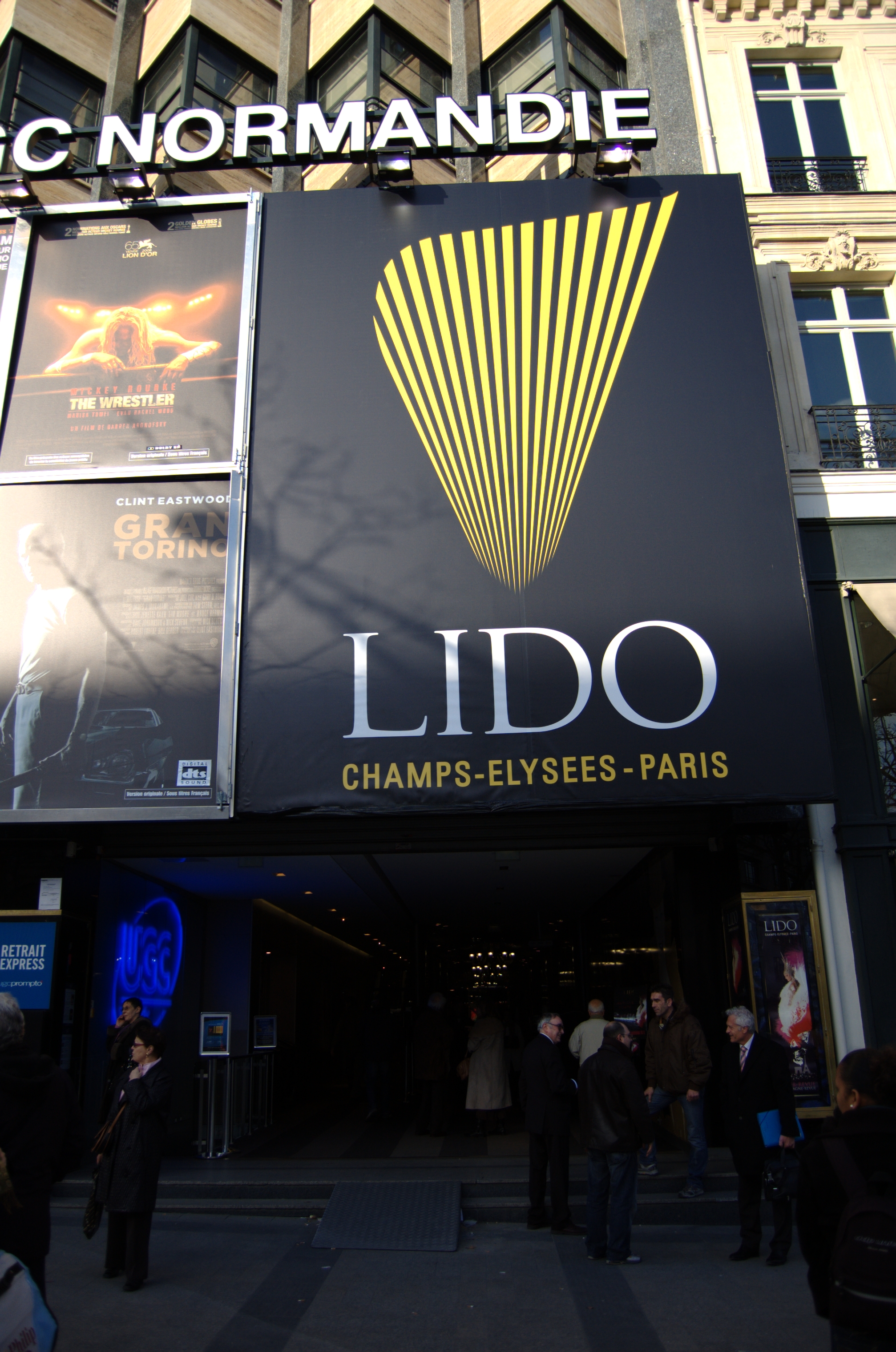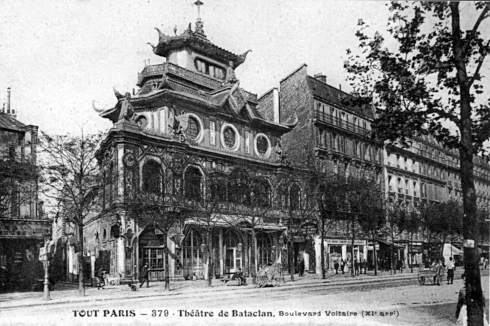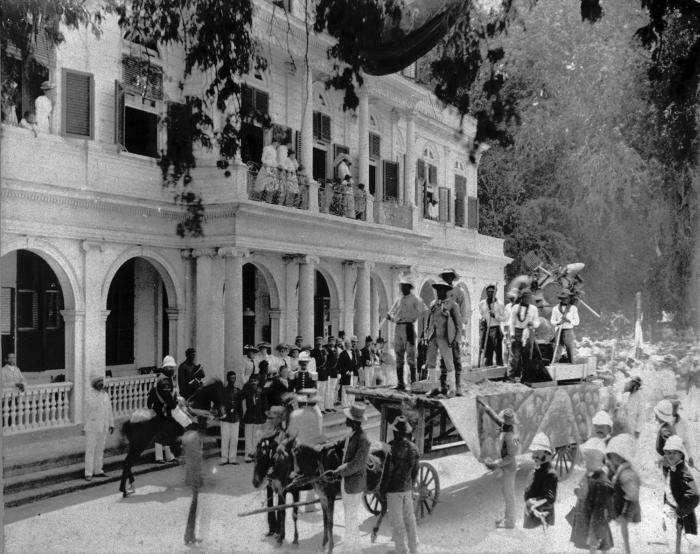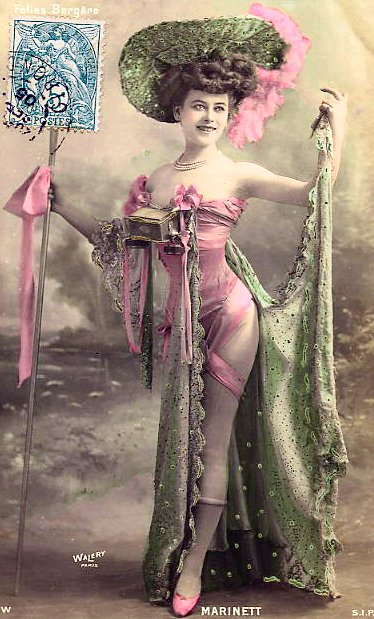|
Vedette (cabaret)
A vedette is the main female artist of a show derived from cabaret and its subcategories of revue, vaudeville, music hall or burlesque. The purpose of the vedette is to entertain and captivate the public. Vedettes are expected to triple threat (entertainer), sing, dance and act on stage. Particularly accomplished artistes are considered ''super vedettes'' or ''first vedettes''. Vedettes often appear alongside groups of dancers, flashy and revealing costumes, Magic (illusion), magicians, comedians, jugglers, or even performing animals. Vedettes specializing in burlesque generally do striptease and may also perform nude on stage. In the 20th century, vedette shows were successful in the cabarets, theaters and nightclubs of countries such as Spain, France, Argentina and Mexico. Paris and Las Vegas were considered the main cradle of the vedettes. Etymology ''Vedette'' is a French word that designates the star of a show, at the top of the billing. The meaning of the term has changed ov ... [...More Info...] [...Related Items...] OR: [Wikipedia] [Google] [Baidu] |
Cabaret
Cabaret is a form of theatrical entertainment featuring music song, dance, recitation, or drama. The performance venue might be a pub, casino, hotel, restaurant, or nightclub with a stage for performances. The audience, often dining or drinking, does not typically dance but usually sits at tables. Performances are usually introduced by a master of ceremonies (M.C.). The entertainment, as performed by an ensemble of actors and according to its European origins, is often (but not always) oriented towards adult audiences and of a clearly underground music, underground nature. In the United States, striptease, American burlesque, burlesque, drag shows, or a solo (music), solo vocalist with a pianist, as well as the Music venue, venues which offer this entertainment, are often advertised as cabarets. Etymology The term originally came from Picard language or Walloon language words ''camberete'' or ''cambret'' for a small room (12th century). The first printed use of the word ''kaberet' ... [...More Info...] [...Related Items...] OR: [Wikipedia] [Google] [Baidu] |
Le Lido
Le Lido is a musical theatre venue located on the Champs-Élysées in Paris, France. It opened in 1946 at 78 Avenue des Champs-Élysées and moved to its current location in 1977. Until its purchase by Accor in 2021, it was known for its exotic cabaret and burlesque shows including dancers, singers, and other performers. Famous names have performed there including: Edith Piaf, Siegfried and Roy, Hervé Vilard, Sylvie Vartan, Ray Vasquez, Renee Victor, Johnny Hallyday, Maurice Chevalier, Marlene Dietrich, Eartha Kitt, Josephine Baker, Kessler Twins, Elton John, Laurel & Hardy, Dalida, Shirley MacLaine, Mitzi Gaynor, Juliet Prowse, and Noël Coward. History Le Lido was preceded by an artificial beach in a townhouse basement in the 1920s, running as a nightclub/casino in the late night hours. ''Lido'', founded in 1928, at 78 Avenue des Champs-Élysées, by Francisque Chaux (1851-1949), with entertainment, aquatic shows and bathing, with interior design by René B ... [...More Info...] [...Related Items...] OR: [Wikipedia] [Google] [Baidu] |
Gina Palerme
Gina Palerme (born Marie Louise Irène de Maulmont, 18 December 1885 – 26 December 1977) was a French actress and dancer. Biography Gina Palerme was born Marie Louise Irène de Maulmont (also spelled Maumont) on 18 December 1885, the daughter of Baron Marie Antoine Aymard Hubert de Maulmont (1850–1891) and Antoinette Gazenaud (born 1853). She had an older brother, Marie Jean Baptiste Marcel (1882–1914), who died in World War I, and a younger sister, Rose (born 1889). The family were descended from the ancient Limousin nobility and were related to the House of Borgia. Palerme's father died in 1891, and she and her two siblings were raised by their widowed mother. Palerme began her stage career in France in 1909 before being discovered by an English impresario in 1910. Palerme left for London, and debuted as Toinette in ''The Quaker Girl'' at the Adelphi Theatre, followed by appearances in West-end productions such as ''The Dancing Mistress'' (1912), ''Betty'' (1 ... [...More Info...] [...Related Items...] OR: [Wikipedia] [Google] [Baidu] |
Mistinguett
Jeanne Florentine Bourgeois (5 April 1873 – 5 January 1956), known professionally as Mistinguett (), was a French actress and singer. She was at one time the highest-paid female entertainer in the world. Early life The daughter of Antoine Bourgeois, a 31-year-old day-labourer, and Jeannette Debrée, a 21-year-old seamstress, Jeanne Bourgeois was born at 5 Rue du Chemin-de-Fer (today Rue Gaston-Israël), in Enghien-les-Bains, Val-d'Oise, Île-de-France, France. The family moved to Soisy-sous-Montmorency where she spent her childhood; her parents later worked as mattress-makers.Flanner, Janet, ''Paris Journal, Volume Two, 1956—1964'' (Harcourt Brace Jovanovich, 1965), page 6 At an early age Bourgeois aspired to be an entertainer. She began as a flower seller in a restaurant in her hometown, singing popular ballads as she sold blossoms. Entertainer After taking classes in theatre and singing, she began her career as an entertainer in 1885. One day on the train to Paris f ... [...More Info...] [...Related Items...] OR: [Wikipedia] [Google] [Baidu] |
La Bella Otero
Agustina del Carmen Otero Iglesias (4 November 1868 – 10 April 1965), better known as Carolina Otero or La Belle Otero, was a Spanish actress, dancer and courtesan. She had a reputation for great beauty and was famous for her numerous lovers. Biography Early years Agustina del Carmen Otero Iglesias was born in Valga Galicia, Spain, daughter of a Spanish single mother, Carmen Otero Iglesias (1844–1903), and a Greek army officer named Carasson.''Les Souvenirs et la Vie Intime de la Belle Otero'' Place des Libraires Her family was impoverished, and as a child she moved to Santiago de Compostela working as a maid. At age 10, she was raped, and at 14, she left home with her boyfriend and dancing partner Paco and ... [...More Info...] [...Related Items...] OR: [Wikipedia] [Google] [Baidu] |
Liane De Pougy
Liane de Pougy (born Anne-Marie Chassaigne, 2 July 1869 – 26 December 1950) was a French dancer, courtesan and novelist. She was a Folies Bergère vedette, and was known as one of the most beautiful and notorious courtesans in Paris. Later in life, she became a Dominican tertiary. Early life and marriage Anne-Marie Chassaigne was born in La Flèche, Sarthe, France, the daughter of Pierre Blaise Eugène Chassaigne and his Spanish-French wife Aimée Lopez. She had an older brother, Pierre (1862–1921). She was raised in a nunnery. At the age of 16, she ran off with Joseph Armand Henri Pourpe, a naval officer, whom she married after getting pregnant. The baby was named Marc Pourpe. De Pougy described herself as a terrible mother, saying, "My son was like a living doll given to a little girl." She also admitted she would have preferred the baby to be a girl ‘because of the dresses and the curly hair’. Marc grew up to volunteer as an airman in World War I and was kille ... [...More Info...] [...Related Items...] OR: [Wikipedia] [Google] [Baidu] |
Émilienne D'Alençon
Émilienne d'Alençon (17 July 1870 – 14 February 1945) was a French dancer, actress, and courtesan. Biography Born in Paris, d'Alençon made her début at the Cirque d'été in 1889 before appearing at the Casino de Paris, Théâtre Antoine-Simone Berriau, Menus-Plaisirs, Folies Bergère, Paris Scala, and the Théâtre des Variétés. Among her earlier shows were ''Paris Boulevards'', ''Vénus d'Arles,'' and ''Que d'eau Que d'eau''. She appeared in ''La Belle et la Bête'' at the Folies Bergère and she danced in the ballet ''The Red Slippers'' in London. She also performed as a dancer at the Paris Olympia in ''Faust'' and ''Grand Ballet Féerie''. In 1892, she came on stage as a snake dancer. Renowned as a courtesan, she was involved in a number of affairs including one with the industrialist Étienne Balsan. In 1895, she married the jockey Percy Woodland. Émilienne d'Alençon left the stage in 1906 and invested in horse racing. After losing her fortune on drugs and gambl ... [...More Info...] [...Related Items...] OR: [Wikipedia] [Google] [Baidu] |
Bataclan (theatre)
The Bataclan () is a theatre located at 50 Boulevard Voltaire in the 11th arrondissement of Paris, France. Designed in 1864 by the architect Charles Duval, its name refers to '' Ba-ta-clan'', an operetta by Jacques Offenbach. Since the early 1970s, it has been a venue for rock music. On 13 November 2015, 90 people were killed in a coordinated terrorist attack in the theatre. History Origin and use The Bataclan originated as a large '' café-concert'' in the Chinoiserie style, with the café and theatre on the ground floor and a large dance hall at first-floor level. Its original name was Grand Café Chinois. The French name "Bataclan" refers to the Offenbach operetta, but it is also a pun on the expression ''tout le bataclan'' (the "kit and caboodle", or "all that jazz", or "the whole nine yards"), the oldest written use of which predates Offenbach by almost a century, in a journal entry of 11 November 1761 by Charles Simon Favart. Concerts were held there but it was bes ... [...More Info...] [...Related Items...] OR: [Wikipedia] [Google] [Baidu] |
Tableau Vivant
A (; often shortened to ; ; ) is a static scene containing one or more actors or models. They are stationary and silent, usually in costume, carefully posed, with props and/or scenery, and may be theatrically illuminated. It thus combines aspects of theatre and the visual arts. They were a popular medieval form that revived considerably from the 19th century, probably as they were very suitable for recording by photography. The participants were now mostly amateurs, participating in a quick and easy form of amateur dramatics that could be brought together in an evening, and required little skill in acting or speaking. They were also popular for various sorts of community events and parades. In the late 19th and early 20th centuries, there was also a type of ''tableau'' used in the professional theatre, taking advantage of the extra latitude the law allowed for the display of nudity so long as the actors did not move. Tableaux featured ('flexible poses') by virtually nude ... [...More Info...] [...Related Items...] OR: [Wikipedia] [Google] [Baidu] |
Folies Bergère
150px, Stanisław Julian Ignacy Ostroróg">Walery, 1927 The Folies Bergère () is a cabaret music hall in Paris, France. Located at 32 Rue Richer in the 9th Arrondissement, the Folies Bergère was built as an opera house by the architect Plumeret. It opened on 2 May 1869 as the Folies Trévise, with light entertainment including operettas, comic opera, popular songs, and gymnastics. It became the Folies Bergère on 13 September 1872, named after nearby Rue Bergère. The house was at the height of its fame and popularity from the 1890s' ''Belle Époque'' through the 1920s. Revues featured extravagant costumes, sets and effects, and often nude women. In 1926, Josephine Baker, an African-American expatriate singer, dancer and entertainer, caused a sensation at the Folies Bergère by dancing in a costume consisting of a skirt made of a string of artificial bananas and little else. The institution is still in business, and is still a strong symbol of French and Parisia ... [...More Info...] [...Related Items...] OR: [Wikipedia] [Google] [Baidu] |
Teatro De La Ciudad
The (Theater of the City) was built as the (Esperanza Iris Theatre) in 1918 and is now one of Mexico City’s public venues for cultural events. The theater is located in the historic center of Mexico City on Donceles Street 36. The former Esperanza Iris Theatre The current theater building was constructed in 1918, on the site of the prior Teatro Xicoténcatl. It was originally named after diva Esperanza Iris. Iris, born María Esperanza Bonfil, was an operetta singer from the state of Tabasco active in the early 20th century. Her career was most successful in Mexico City, Havana and Madrid, but she toured extensively in the Americas. Some of her best known works are ''The Merry Widow'', ''The Count of Luxembourg'' and ''.'' She also acted in a number of films in the 1930s.'''' The theatre was partially funded by Iris, from earnings from a recent tour. The architects were Capetillo Servín and who based the work on the La Scala opera house in Milan, Italy. The theatre was ope ... [...More Info...] [...Related Items...] OR: [Wikipedia] [Google] [Baidu] |
Teatro El Nacional
Teatro may refer to: * Theatre * Teatro (band) Teatro, Italian for "theatre", is a vocal group signed to the Sony BMG music label. The members of Teatro are Jeremiah James, Andrew Alexander, Simon Bailey and Stephen Rahman-Hughes. Band members Jeremiah James Jeremiah James was born in up ..., musical act signed to Sony BMG * ''Teatro'' (Willie Nelson album), 1998 * ''Teatro'' (Draco Rosa album), 2008 {{disambiguation ... [...More Info...] [...Related Items...] OR: [Wikipedia] [Google] [Baidu] |








